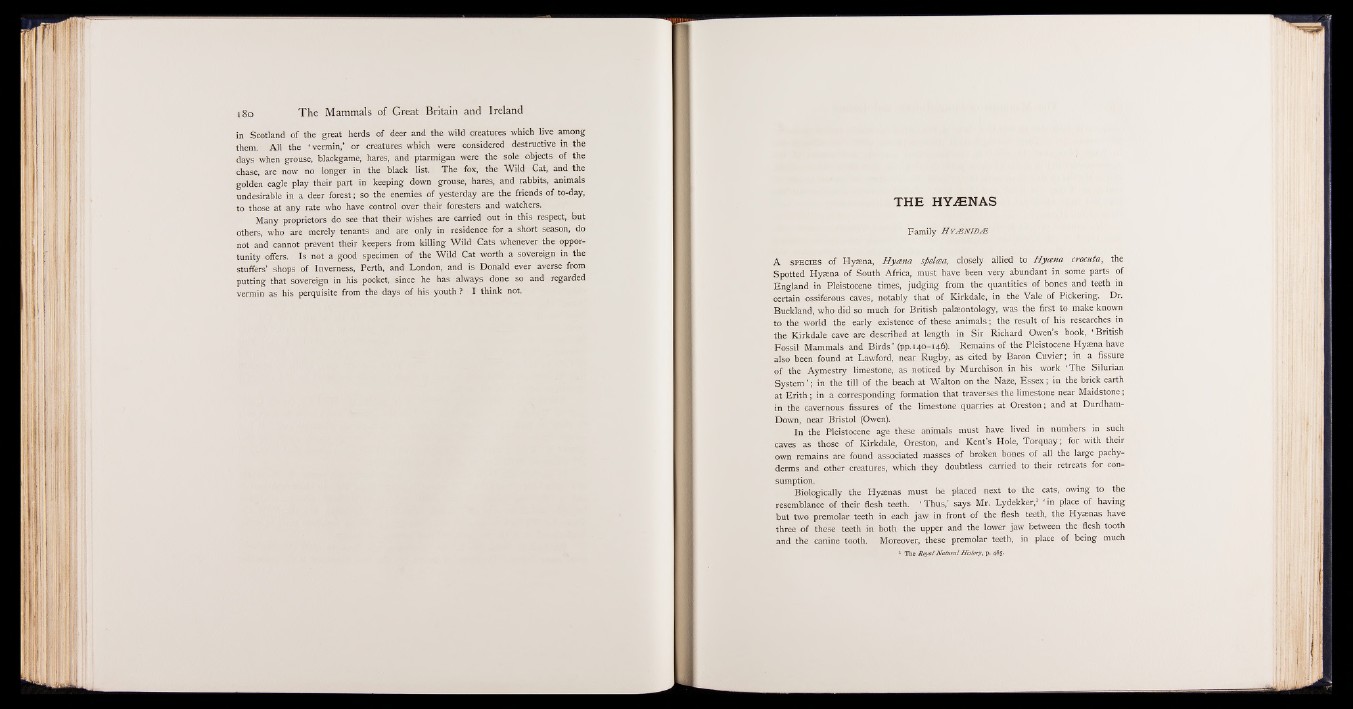
in Scotland of the great herds of deer and the wild creatures which live among
them. All the ‘ vermin/ or creatures which were considered destructive in the
days when grouse, blackgame, hares, and ptarmigan were the sole objects of the
chase, are now no longer in the black list. The fox, the Wild Cat, and the
golden eagle play their part in keeping down grouse, hares, and rabbits, animals
undesirable in a deer forest; so the enemies of yesterday are the friends of to-day,
to those at any rate who have control over their foresters and watchers.
Many proprietors do see that their wishes are carried out in this respect,, but
others, who are merely tenants and are only in residence for a short season, do
not and cannot prevent their keepers from killing Wild Cats whenever the opportunity
offers. Is not a good specimen of the Wild Cat worth a sovereign in the
stuffers’ shops of Inverness, Perth, and London, and is Donald ever averse from
putting that sovereign in his pocket, since he has always done so and regarded
vermin as his perquisite from the days of his youth ? I think not.
THE HYAENAS
Family H y&NIDjE
A s p e c i e s of Hyaena, Hycsna spelcea, closely allied to Hyesna cvocuta, the
Spotted Hyaena of South Africa, must have been very abundant in some parts of
England in Pleistocene times, judging from the quantities of bones and teeth in
certain ossiferous caves, notably that of Kirkdale, in the Vale of Pickering. Dr.
Buckland, who did so much for British palaeontology, was the first to make known
to the world the early existence of these animals; the result of his researches in
the Kirkdale cave are described at length in Sir Richard Owen s book, ‘ British
Fossil Mammals and Birds’ (pp. 140—146). Remains of the Pleistocene Hyaena have
also been found at Lawford, near Rugby, as cited by Baron Cuvier; in a fissure
of the Aymestry limestone, as noticed by Murchison in his work ‘ The Silurian
System’ ; in the till of the beach at Walton on the Naze, Essex; in the brick earth
at Erith; in a corresponding formation that traverses the limestone near Maidstone;
in the cavernous fissures of the limestone quarries at Oreston; and at Durdham-
Down, near Bristol (Owen).
In the Pleistocene age these animals must have lived in numbers in such
caves as those of Kirkdale, Oreston, and Kent’s Hole, Torquay; for with their
own remains are found associated masses of broken bones of all the large pachyderms
and other creatures, which they doubtless carried to their retreats for consumption.
Biologically the Hyzenas must be placed next to the cats, owing to the
resemblance of their flesh teeth. ‘ Thus,’ says Mr. Lydekker,1 ‘ in place of having
but two premolar teeth in each jaw in front of the flesh teeth, the Hyaenas have
three of these teeth in both the upper and the lower jaw between the flesh tooth
and the canine tooth. Moreover, these premolar teeth, in place of being much
1 The Royal Natural History, p. 485.